Eltako FTN14 Handleiding
Eltako
Niet gecategoriseerd
FTN14
Bekijk gratis de handleiding van Eltako FTN14 (2 pagina’s), behorend tot de categorie Niet gecategoriseerd. Deze gids werd als nuttig beoordeeld door 63 mensen en kreeg gemiddeld 4.5 sterren uit 32 reviews. Heb je een vraag over Eltako FTN14 of wil je andere gebruikers van dit product iets vragen? Stel een vraag
Pagina 1/2

Staircase off-delay timer, 1 NO contact not
potential free 16A/250V AC, incandescent
lamps up to 2000 watts, switch-off early
warning and switchable pushbutton
permanent light. Also for energy saving
lamps ESL up to 200 Watt. Bidirectional.
Only 0.2 watt standby loss.
Modular device for DIN-EN 60715 TH35
rail mounting.
1 module = 18 mm wide, 58mm deep.
Connection to the Eltako-RS485 bus.
Bus cross wiring and power supply with
jumper.
Switching voltage 230V.
Zero passage switching to protect
contacts and consumers.
When the power supply fails, the switching
state will be maintained. With recurring
supply voltage, the timing starts at the
end of which it will be switched off.
In addition to the bus control input, this
staircase off-delay timer can also be
controlled locally by a conventional
230V control switch. Glow lamp current
up to 5mA, dependent on the ignition
voltage of the glow lamps.
GB
Only skilled electricians may install
this electrical equipment otherwise
there is the risk of fire or electric
shock!
Temperature at mounting location:
-20°C up to +50°C.
Storage temperature: -25°C up to +70°C.
Relative humidity:
annual average value <75%.
RS485 bus actuator
Staircase off-delay timer
FTN14
30 014 011 - 2
valid for devices from production week
40/17 (see bottom side of housing)
Function rotary switches
The upper rotary switch LRN is required
for teach-in. Then the off-delay 1 to
30 minutes can be set.
Wireless pushbuttons and/or wireless
motion-brightness sensors FBH will be
taught-in with the middle rotary switch
in the setting LRN, of which one or more
are central control push buttons. The re-
quired function of this staircase off-delay
timer can then be selected:
NLZ= off-delay timer with adjustable
operate delay
TLZ = staircase time switch
ESL = staircase time switch for energy
saving lamps ESL
+ = with pushbutton
permanent light
(only TLZ)
+ = with switch-off early
warning (TLZ + ESL)
+ = with pushbutton
permanent light and
switch-off early warning
(TLZ + ESL)
If the permanent light function is
switched on, the function can be activated
by pressing the pushbutton for longer
than 1 second. This function switches off
automatically after 60 minutes or by
pressing the pushbutton for longer than
2 seconds.
If the switch-off early warning is
switched on, the light starts to flicker
approx. 30 seconds before time-out.
This is repeated three times at decreasing
time intervals.
If both switch-off early warning and
push button permanent light are
switched on, switch-off early warning is
activated before automatic switch-off of
the permanent light.
Setting AUTO1 = 1s, AUTO2 = 30s, AU-
TO3 = 60 s, AUTO4 = 90s and AUTO5
= 120 s (clockwise). Also permanent
light function can be set manually.
If in contrast NLZ will be controlled with
a pushbutton, then it will be switched on
with the 1st key and the timing starts at
the 2nd key at the end of which it will be
switched off.
When teaching-in wireless motion/
brightness sensors FBH (Master), the
switching threshold is defined on the
last FBH taught-in to switch the light
on/off depending on the brightness -
provided motion is detected. Possibly
becomes an already taught-in FBH
(Master) automatically removed.
However several FBH (slave) can be
taught-in. The off delay set on the FTN14
is prolonged by a setting of 1 minute
fixed in the FBH.
At , the light will turn on after aFB65B
motion detection. 2 minutes after the
last detected motion, the light will turn off,
an eventual RV time is added to these
2 minutes.
When teaching-in window/door contacts
FTK and (or) window handles, a NC or
NO can be taught-in as required.
Accordingly, the timing period starts when
opening or closing the window or the door.
If areswitches for permanent operation
taught-in, for example wireless transmitter
modules or FTS14EM, it is switched on
when pressing and the time will be started
when releasing.
The LED performs during the teach-in
process according to the operation
manual. It shows control commands by
short flickering during operation.
Typical connection
A response delay (AV delay) can be set
with the lower rotary switch at setting
NLZ or when controlled with a switch.

Teaching-in wireless sensors in
wireless actuators
All sensors must be taught-in in the
actuators so that they can detect and
execute commands.
Teaching-in actuator FTN14
Also the mains connection N/L is
required for teach-in.
The teach-in memory is clear on delivery
from the factory. To ensure that a device
was not previously taught-in, clear the
complete memory:
Turn the middle rotary switch to CLR.
The LED flashes at a high rate. Within
10 seconds, turn the upper rotary switch
three times to right stop (turn clockwise)
and back again. The LED stops flashing
and goes out after 2 seconds.
All taught-in sensors are cleared.
Clear single taught-in sensors: in the
same way as in the teach-in procedure,
except that you set the middle rotary
switch to CLR instead of LRN, and ope-
rate the sensor. The LED previously flas-
hing at a high rate goes out.
!
Technical data
Rated switching capacity 16A/250V AC
Incandescent lamp and up to 2000W
halogen lamp load1) 230V
Fluorescent lamp load 1000VA
with KVG* in lead-lag circuit
or non compensated
Fluorescent lamp load with KVG* 500VA
shunt-compensated or with EVG*
Compact fluorescent lamps 15x7W
with EVG* and 10x 20W
energy saving lamps
Local control current at 5mA
230V control input
Max. parallel capacitance 0.3μF
(approx. length) of local (1000m)
control lead at 230V AC
Standby loss (active power) 0.2W
1) Applies to lamps of max. 150 W.
* EVG = electronic ballast units;
KVG = conventional ballast units
When an actuator is ready for
teach-in (the LED flashes at a
low rate), the very next incoming
signal is taught-in.
Therefore, make absolutely sure
that you do not activate any
other sensors during the teach-in
phase.
!
Eltako GmbH
D-70736 Fellbach
Technical Support English:
Michael Thünte +49 176 13582514
thuente@eltako.de
Marc Peter +49 173 3180368
marc.peter@eltako.de
eltako.com
22/2019 Subject to change without notice.
Must be kept for later use!
We recommend the housing for operating
instructions GBA14.
The LED stops flashing and goes out
after 5 seconds. The factory settings are
restored and the device address deleted.
Configure FTN14:
The following points can be configured
with the PC tool PCT14:
■behavior upon return of supply voltage
■teaching-in of wireless pushbuttons
with single or double click
■add or change sensors
CAUTION! Don't forget 'disconnect FAM'
in the PC tool. While the connection
from the PC tool to the FAM14 exists,
no wireless commands are executed.
Teach-in confirmation telegram of
another bus actuator to the FTN14:
As in the teach-in procedure, only set
the middle rotary switch to LRA instead
to LRN.
'Switch ON' will be taught-in as 'central
ON'.
'Switch OFF' will be taught-in as 'central
OFF'.
Assign device address for the FTN14:
The rotary switch on the FAM14 is set to
position 1, its lower LED flashes red.
The middle rotary switch of the FTN14 is
set to LRN, the LED flashes smoothly.
After the address of the FAM14 was
assigned, its lower LED flashes green
for 5 seconds and the LED of the FTN14
goes out.
Delete device configuration:
Set the middle rotary switch to CLR.
The LED flashes nervously. Then turn the
upper rotary switch within 10 seconds
3 times to the leftmost stop (anticlock-
wise) and turn it back again.
The LED stops flashing and goes out
after 5 seconds. The factory settings are
restored.
Delete device configuration and device
address:
Set the middle rotary switch to CLR.
The LED flashes nervously. Then turn the
upper rotary switch within 10 seconds
6 times to the leftmost stop (anticlock-
wise) and turn it back again.
Teaching-in sensors:
1. Set the top rotary switch to the required
teach-in function:
1 = teach-in 'switch' (activation with
wire less transmitter modules or
FTS14EM);
2 = teach-in 'central OFF';
3 = universal switch;
4 = teach-in 'central ON';
6 = FTK and window handle as NC
contact;
8 = FTK and window handle as NO
contact;
1..20 = dark .. light of a FBH (Master)
30 = FBH (Slave) only motion detection
2.Set the middle rotary switch to LRN.
The LED flashes at a low rate.
3.Operate the sensor to be taught-in.
The LED goes out.
At FB65B, the upper rotary switch
position is not important during the
teaching-in procedure.
As universal switch, teach-in the top
and bottom pushbutton.
To teach-in further sensors, turn the
middle rotary switch briefly away from
position LRN. Continue the procedure
from pos 1.
Product specificaties
| Merk: | Eltako |
| Categorie: | Niet gecategoriseerd |
| Model: | FTN14 |
Heb je hulp nodig?
Als je hulp nodig hebt met Eltako FTN14 stel dan hieronder een vraag en andere gebruikers zullen je antwoorden
Handleiding Niet gecategoriseerd Eltako
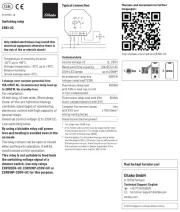
14 April 2025
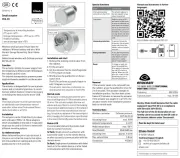
14 April 2025

13 Maart 2024

21 Februari 2024

21 Februari 2024

21 Februari 2024

21 Februari 2024

20 Februari 2024

20 Februari 2024

20 Februari 2024
Handleiding Niet gecategoriseerd
Nieuwste handleidingen voor Niet gecategoriseerd

18 September 2025

18 September 2025
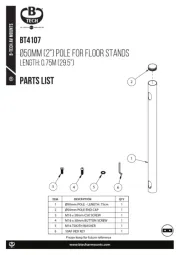
18 September 2025
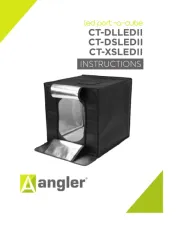
18 September 2025

18 September 2025
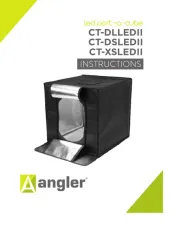
18 September 2025

18 September 2025

18 September 2025

18 September 2025

18 September 2025